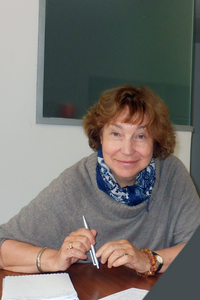The Particularity of Religious Orders as Reflected in the Art of the Spanish Golden Age. Statement of the Problem
https://doi.org/10.46272/2409-3416-2025-13-3-139-154
Abstract
The fact that there were numerous religious orders and confraternities in Spain during the Golden Age is beyond doubt. It was religious orders that commissioned a great number of works of art in Spain in the 16th‒17th centuries. At the same time, the life of the orders themselves was subject to certain historical patterns that are yet to be fully explored. However, there is evidence that mendicant religious orders flourished in the decades following the Council of Trent, i.e. in the second half of the 16th and the first half of the 17th century. It was the Franciscan order, as well as those resembling it in their ascetic way of life Hieronymite and Cistercian orders, the Carthusians, Mercedarians and Carmelites that enjoyed the greatest popularity with the powers at that time. However, the comparative method of analysis shows that the second half of the 17th century witnessed a certain decline in the artistic patronage of these orders, while the Jesuits, Dominicans, and Augustinians started to actively commission works of art. Consequently, the iconography of triumphs, which depicted saints popular with the Augustinians, Dominicans and Jesuits, became widespread, with the works of Claudio Coello, a distinguished painter of the second half of the 17th century, being a testimony to that. At the same time, the question remains whether shifts in the dominance of orders contributed to a shift in their iconographic preferences or, conversely, iconographic preferences resulted in the dominance of certain orders.
Keywords
About the Author
A. V. MorozovaRussian Federation
Anna V. Morozova, Doctor of Cultural Studies, PhD (History of Art), associate professor, Department of History of Western European Art
199034, Russia, Saint Petersburg, Universitetskaya Embankment, 7/9
References
1. Варбург А. (2008) Великое переселение образов: Исследование по истории и психологии возрождения античности, Санкт-Петербург, Азбука-классика, 384 с.
2. Warburg A. (2008) Velikoe pereselenie obrazov: Issledovanie po istorii i psikhologii vozrozhdeniya antichnosti [Great resettlement of images: A Study on the History and Psychology of the Renaissance of Antiquity], Saint Petersburg, Azbuka-klassika, 384 р. (In Russian)
3. Ведюшкин В.А. (2011) Испания. Конец XIII – конец XV в., XVI‒XVII вв., Православная Энциклопедия, под ред. Патриарха Московского и всея Руси Кирилла, Москва, Церковно-научный центр «Православная энциклопедия», т. XXVII, c 451‒465.
4. Vedjushkin V.A. (2011) Ispanija. Konets XIII – konets XV v., XVI‒XVII vv. [Spain. The end of the 13th – the end of the 15th century, 16th ‒ 17th centuries], in Patriarha Moskovskogo i vsejа Rusi Kirilla (ed.) Pravoslavnaja Jenciklopedija [The Orthodox Encyclopedia], Moscow, Cerkovno-nauchnyj centr «Pravoslavnaja jenciklopedija», vol. XXVII, pp. 451‒465. (In Russian)
5. Ведюшкин В.А., Попова Г.А. (ред.) (2012) История Испании. Том 1. С древнейших времен до конца XVII века, Москва, Индрик, 696 с.
6. Vedyushkin V.A., Popova G.A. (eds.) (2012) Istoriya Ispanii. Tom 1. S drevneishikh vremen do kontsa XVII veka [The history of Spain. Volume 1. From ancient times to the end of the 17th century], Moscow, Indrik, 696 p. (In Russian)
7. Дефурно М. (2004) Повседневная жизнь Испании золотого века, Москва, Молодая гвардия, 314 с.
8. Defurno M. (2004) Povsednevnaja zhizn’ Ispanii zolotogo veka [Everyday Life in Spain of Golden Age], Moscow, Molodaya gvardija, 314 p. (In Russian)
9. Калугина Е.О. (2014) Образ святого Иеронима в испанской живописи XV‒XVI веков, Вестник МГЛУ, Вып. 24(710), c. 351‒371.
10. Kalugina E.O. (2014) Obraz svjatogo Ieronima v ispanskoj zhivopisi XV‒XVI vekov [The Image of Saint Hieronymus in Spanish Art of the 15th–16th Centuries], Vestnik MGLU, Iss. 24(710), pp. 351‒371. (In Russian)
11. Ногтева О.А. (2011) Испания. Готика. Возрождение. Барокко, Православная Энциклопедия, под ред. Патриарха Московского и всея Руси Кирилла, Москва, Церковно-научный центр «Православная энциклопедия», т. XXVII, с. 504‒522.
12. Nogteva O.A. (2011) Ispanija. Gotika. Vozrozhdenie. Barokko [Spain. Gothic. Renaissance. Baroque], in Patriarha Moskovskogo i vsejа Rusi Kirilla (ed.) Pravoslavnaja Jenciklopedija [The Orthodox Encyclopedia], Moscow, Cerkovno-nauchnyj centr «Pravoslavnaja jenciklopedija», vol. XXVII, pp. 504‒522. (In Russian)
13. Федосов Д.Г. (2020) Образ и вера. Церковное искусство и народная религиозность Испании XVI–XVII веков, Москва, Государственный институт искусствознания, 250 с. Fedosov D.G. (2020) Obraz i vera. Cerkovnoe iskusstvo i narodnaja religioznost’ Ispanii XVI–XVII vekov [Image and faith. Ecclesiastical art and folk religiosity of Spain of the XVI–XVII centuries], Moscow, Gosudarstvennyj institut iskusstvoznanija, 250 p. (In Russian)
14. García Cueto D. (2016) Claudio Coello: pintor, 1642–1693 [Claudio Coello: painter, 1642–1693], Madrid, Arco/Libros. La Muralla, 244 p. (In Spanish)
15. Pérez Sánchez A.E. (2005) Pintura barroca en España, 1600‒1750 [Baroque painting in Spain, 1600–1750]. Madrid, Catedra, 506 p. (In Spanish)
Review
For citations:
Morozova A.V. The Particularity of Religious Orders as Reflected in the Art of the Spanish Golden Age. Statement of the Problem. Cuadernos Iberoamericanos. 2025;13(3):139-154. (In Russ.) https://doi.org/10.46272/2409-3416-2025-13-3-139-154
























